ARCHIVE – BC & NATIONAL Breaking News [February 2017]
Tuesday, February 28 ~ Northern BC [2:40 pm] . Burns Lake RCMP are investigating after an unconfirmed explosive device was brought into the William Konkin Elementary School this morning. The BC RCMP Explosive Disposal Unit is on its way this afternoon to Burns Lake to ensure the device is dealt with appropriately. [UPDATE 4:45 pm: The BC RCMP’s Explosives Disposal Unit has attended to William Konkin Elementary School this afternoon, Feb. 28. They confirmed the device was inert, and could not have exploded, and have removed it for disposal.]
![The Explosive Disposal and Chemical/Biological/Radiological/Nuclear Response (EDU/CBRN) Unit is comprised of full time, highly trained Police Explosives Technicians who are outfitted with state of the art specialized equipment and are capable of dealing with a multitude of Explosives / CBRN related emergencies. {Photo: BC RCMP]](https://islandsocialtrends.ca/wp-content/uploads/2016/09/40186_feature-EXplosiveDispsoal-BCRCMP-web-300x169.jpg)
“Their reaction time was excellent, and it was very reassuring she was able to quickly account for the safety of all staff and students.” There were no injuries to any staff or students, he notes.
“We took the step of calling for the Explosive Disposal Unit to attend, out of an abundance of caution,” he says. He also added his appreciation for the cooperation of parents, staff and students.
As this investigation is active right now, the RCMP will not be able to comment on the nature of the device, or how it was brought into the school.
Burns Lake is a rural village in the North-Central Interior of British Columbia ‘Lakes Region’, population approximately 2,000.

Monday, February 27 ~ West side of Vancouver Island. BC NDP leader John Horgan will kick off his 2017 re-election campaign in his home riding of Langford-Juan de Fuca on Saturday March 11.
The big-crowd event will be held at the Langford Legion, 761 Station Avenue starting at 10:30am.
Horgan has held the Langford-area riding (by various electoral area names, including Sooke and up to Port Renfrew) since 2005. He has also built an NDP stronghold on Vancouver Island that has repeatedly proven for him to have a far-reaching and deep reach into many communities and economic sectors.
For this election, the reboundaried riding has lost the largely rural area of Metchosin. Ridings are rebalanced over the years based on population numbers. Both Langford and Sooke have seen population increases in recent years, due mainly to the relatively lower cost of housing on the west side of south Vancouver Island.
The BC provincial election is set for Tuesday, May 9.
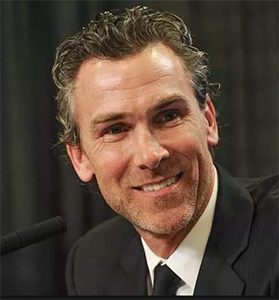
Monday, February 27 ~ BC. Are the Canucks redefining NHL hockey culture? Hockey culture is adopting a leadership style that nurtures skilled communicators, system thinkers, and compassionate collaborators who build teams and community.
At least that’s the aspirational view University of Victoria leadership studies researcher Carolyn Crippen puts forward in her new study of servant-leader philosophy in the NHL, as exemplified by Henrik and Daniel Sedin and key members of the Canucks organization.
“A Case Study of Servant Leadership in the NHL,” published in Interchange, a Quarterly Review of Education, provides evidence of the influence of the Sedins, Trevor Linden, Pat Quinn and others on the changing culture of the Vancouver Canucks, and provides expert comment on how their example could influence the NHL, aspiring professional hockey players, and sport in general.
“This study is about a side of hockey that’s often overlooked,” Crippen says.
Servant-leadership, a term coined by management researcher Robert Greenleaf in 1970, is described as a more humane, value-based and creative management style in which the leader focuses on the needs of the followers first.
The leadership philosophy that Crippen studies mostly within corporate and organizational cultures, she hadn’t expected to find in hockey until the Sedins and their playing style caught her eye when she moved to BC from Manitoba in 2009. As described in an earlier study in 2013, she says the Sedins stood out for their civil, respectful approach to their teammates, coaches, opponents and officials. She came to see them as the “culture carriers” of the team, a term used by Canucks GM Jim Benning in an interview with Vancouver sports writer Ed Willes.
“Daniel and Henrik lead by example with strong values and an unparalleled work ethic,” said Trevor Linden, Vancouver Canucks President of Hockey Operations. “They demonstrate the finest qualities of character both in the game and as community leaders to future generations of players and fans.”
A self-funded research project seven years in the making, Crippen’s study includes: hundreds of hours of close observation and analysis of games broadcast between 2009 and 2016, as well as at a number of live games and practice sessions; a lengthy interview conducted with the Sedin twins and, more recently, with Trevor Linden and two Vancouver sports writers; archival news research; and data analysis.
The Sedins, she found, demonstrate accountability, responsibility, proficiency, diligence, empathy, civic values, inclusivity, and continual growth of self and others. “All of these traits contribute to building better communities, both on and off the ice,” she says.
The original beliefs, values and norms established by Pat Quinn and then disseminated by Trevor Linden during his time as a player, team leader and now as an executive, continues through the Sedins. Because of their lengthy and stable history (18 years) with the team, she asserts that they’ve disseminated and reinforced a culture of civility and skill-based play that’s now embodied within young players.
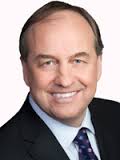
Monday, February 27 ~ VICTORIA. BC Green Party Leader Andrew Weaver, MLA (Oak Bay – Gordon Head) will be out campaigning in his riding on Saturday, March 4.
Ahead of that, this week he’ll be attending an all-candidates listening session on March 2 in Victoria. Then to Vancouver on March 3 to take part in a senior executive roundtable at the Business Council of BC, and a BC Chamber of Commerce Leaders’ Power Lunch in downtown Vancouver.
Weaver is presently the only Green Party MLA in the BC Legislature.

Surrey Fire Department was already on scene when officers arrived, and had extinguished the fire.
The vehicle was a camperized van, and a person was found deceased inside of the vehicle. The man, a 55 year old resident of Surrey, had been sleeping in the van, when it caught fire.
Fire investigators attended to the scene, and an examination of the vehicle has determined that the fire was accidental caused by a short in the electrical system, that had been modified. Attempts to notify the Next of Kin of the male are present on going.
The BC Coroners service attended to the scene, and the matter has been turned over to their office for further investigation.
![The new AED installed in the waiting room at Long Harbour terminal. {Photo by BC Ferries]](https://islandsocialtrends.ca/wp-content/uploads/2016/09/BCFerries-AEDatLongHarbour-web-251x300.jpg)
Thursday, February 23 ~ VICTORIA. BC Ferries has announced the installation of an additional 24 Automated External Defibrillators (AEDs) at minor terminals for customers to use in the event of a medical emergency.
Heart disease and stroke take one life every seven minutes. February is the Heart and
Stroke Foundation’s ‘Heart Month’, a key time to reach millions of Canadians and alert them to the risks of heart disease and stroke. The Heart and Stroke Foundation has supplied BC Ferries with the signage and cabinets for this potentially life-saving equipment through the BC Public Access to Defibrillation Program (BC PAD).
With the advent of increasingly easy to use AEDs, BC Ferries saw an opportunity to improve the possibility of treating a customer or employee at remote locations in a timely manner. Training is not required to use the AEDs that BC Ferries has installed at the minor terminals as the devices are fully automated. The company has registered the locations of all the devices with the BC PAD AED registry so that in the event of a 9-1-1 call from a site with an AED, the dispatcher will be able to direct the caller to the location of the equipment.
“BC Ferries has been pleased to work with the Heart and Stroke Foundation over the past
year to implement an enhanced level of access to the devices for the public,” said Corrine Storey, BC Ferries’ Vice President of Customer Services.
“The safety of our customers and our employees is a top priority at BC Ferries and with 20 million people travelling throughout our system each year, this is another important way we are striving to become a world-class safety organization.” and CPR, the chance of survival from sudden cardiac arrest decreases by seven to 10 per cent for each minute that passes,” says Adrienne Bakker, CEO, Heart and Stroke Foundation, BC & Yukon. “It’s wonderful to see employers like BC Ferries take the initiative to ensure increased safety for their customers and employees by placing AEDs in their terminals.”
The major terminals (Tsawwassen, Swartz Bay, Horseshoe Bay, Departure Bay, Duke Point, and Langdale) as well as the vessels have had AEDs available for use by BC Ferries’ Occupational First Aid Attendants for a number of years. The AEDs for Denman Island East, Denman Island West and Hornby Island terminals will be installed later this year due to construction on the waiting rooms, which will bring the number of terminal locations up to 37. BC Ferries was not able to install the equipment at some minor terminals that do not have a secure waiting room.
Automated external defibrillators now available in the event of an emergency at the following terminal locations: Tsawwassen | Swartz Bay | Horseshoe Bay | Departure Bay | Duke Point | Langdale | Port Hardy | Prince Rupert | Skidegate | Bella Bella | Ocean Falls | Klemtu | Port McNeill | Sointula | Alert Bay | Campbell River | Quathiaski Cove, Quadra Island | Heriot Bay, Quadra Island | Whaletown, Cortes Island | Buckley Bay | Litte River | Westview, Powell River | Blubber Bay, Texada Island | Saltery Bay, Powell River | Earls Cove | Nanaimo Harbour | Descanso Bay, Gabriola Island | Chemainus | Long Harbour, Salt Spring Island | Fulford Harbour, Salt Spring Island | Otter Bay, Pender Island | Village Bay, Mayne Island | Sturdies Bay, Galiano Island | Lyall Harbour, Saturna Island
Automated external defibrillators will be available in the event of an emergency at the following terminal locations later this year: Denman Island East | Denman Island West | Shingle Spit, Hornby Island.

Thursday, February 23 ~ BC. New 2016 data from WorkSafeBC indicates young construction workers are less likely to wear hearing protection at work compared to other age groups in the same industry. In addition, young workers in construction are less likely to wear hearing protection as compared to young workers in other industries, such as manufacturing and primary resources.
Among construction workers age 21 or younger, 24% reported not wearing hearing protection as compared to 13% of workers over age 50, and 11% workers in all other age groups. The data was collected in 2016 from more than 160,000 hearing tests conducted by BC employers as part of hearing loss prevention programs.
“Noise-induced hearing loss needs to be taken very seriously,” says Sasha Brown, WorkSafeBC occupational audiologist. “It can be caused by a single exposure to loud noise or more typically by repeated exposures to consistent noise. While the damage may be painless, it is irreversible and may go unnoticed for years or even decades until it reaches a point where it has a significant effect on one’s quality of life.”
According to the Occupational Health and Safety Regulation and Guidelines, employers are required to provide hearing loss prevention programs, monitor noise levels and conduct annual hearing tests for workers exposed to hazardous noise to prevent noise induced hearing loss and permanent hearing damage. All workers are responsible for wearing appropriate hearing protection and to take part in their employer’s hearing loss prevention program. Hazardous noise levels are defined as 85 decibels in the ‘A’ scale for eight hours or the equivalent; the A scale is used for measuring environmental noise.
Hearing loss can go unnoticed by a worker for years or even decades after the initial exposure or series of exposures. Since 2006 there have been more than 37,000 accepted claims for noise-induced hearing-loss in BC, says WorksafeBC.
“We want to raise the level of awareness among employers of the prevalence and seriousness of this occupational disease, as well as the need to have prevention programs and testing in place, so workers don’t have to live with its debilitating effects for the rest of their lives,” Brown says.
WorkSafeBC has online resources to assist in understanding and preventing noise-induced hearing loss: read this WorkSafeBC Bulletin, see A Guide to Hearing Loss Prevention Programs and watch The Hearing Video.
More about hearing loss prevention and safety plans: https://www.worksafebc.com/en/resources/newsletters/worksafe-magazine/worksafe-magazine-janfeb-2017/ask-officer?lang=en
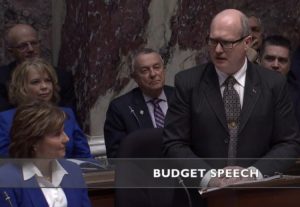
Tuesday, February 21 ~ VICTORIA. This afternoon BC Finance Minister Mike de Jong read out his lengthy Budget Speech 2017 in the BC Legislature... almost word for word to the printed document that you can find online at http://bcbudget.gov.bc.ca .
In watching the live Hansard stream online, Premier Christy Clark appeared to sigh with relief at the end of it all.
Overall it seems like a well-crafted budget, boasting five consecutive years as a balanced budget with a surplus of $295 million in 2017-2018 to help reduce the operating debt. And a triple-A credit rating to boot!
The Finance Minister says almost $3 billion was spent over 3 years on enhanced programs and services. And that record levels of infrastructure investment supported over 30,000 jobs.
“Balanced Budget 2017 provides an additional $796 million over three years to support families, individuals and children most in need,” says a Ministry of Finance news release.
After hearing all of it, this question comes to mind: How far can budget spending treats go toward erasing 16 years of hardship memories? Will families who’ve seen their children under-served in education or who’ve traded off grocery expenditures to pay the hydro bill, really be baited to switch their vote?
During the BC election campaign, the NDP intends to hammer home a reminder of how hard it’s been on families for 16 years, and that an NDP government would do better. BC NDP Leader John Horgan in a media session following the budget said the government has “been riddled with gimmicks from day one”.
Here are just a few of the goodies announced today in the BC Liberal Government 2017 budget that covered a lot of ground both economically as well as politically:
> A promise to begin reducing MSP premiums to an eventual elimination. For starters (as of January 1, 2018), the low-income cutoff for full premium assistance will go up to $26,000, and a family with 2 children can earn up to $35,000 before paying fees. Many people don’t pay directly, but through their company payroll; that will also produce savings for employers.
> PST-portion of hydro billings for businesses to be cut in half to 3.5% starting Oct 1, 2017, and be eliminated by April 1, 2019. But the billing rate for electricity continues to climb.
> The First Time Home Buyers’ Program property purchase tax exemption threshold going up to $500,000 (saving 1st-time buyers up to $8,000, instead of the average $7,600 in 2016).
> Small business tax rate will drop to 2% (from 2.5%) effective April 1, 2017.
> Rural volunteer firefighters and SAR volunteers to get a $3,000 tax credit.
> New mental health funding with a focus on youth including $45 million to the Ministry of Children and Family Development over three years for more mental health counselling and treatment for children.
> 1,900 new campsites promised, to help meet growing demand.
> New park rangers throughout the province.
> And lots more. Full budget speech online
![]() Tuesday, February 21 ~ VICTORIA. The BC provincial government’s Budget 2017 will be available today on the BC Government website as soon as Minister Finance Mike de Jong stands in the House to deliver the Budget Speech (approximately 1:30 pm) on Budget Day, February 21st, 2017.
Tuesday, February 21 ~ VICTORIA. The BC provincial government’s Budget 2017 will be available today on the BC Government website as soon as Minister Finance Mike de Jong stands in the House to deliver the Budget Speech (approximately 1:30 pm) on Budget Day, February 21st, 2017.
The BC Government has promoted the achievement of a balanced budget for now five years in a row. This being an election year, it is no surprise that many government expenditures in areas of infrastructure, health, education and social programs are being rolled out to the tune of millions of dollars.
The challenge to the NDP as Official Opposition leading up to the May 9 provincial election will be in effectively reminding BC residents and voters that continual privatization and cutbacks — as well as stripping certain parameters out of the BC Teachers Union contract — have been damaging (in some ways permanently) to BC families for now 16 years under a BC Liberal government.
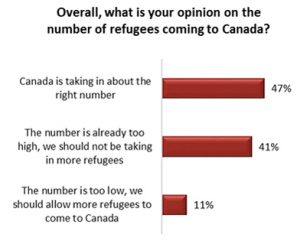 Monday, February 20 ~ NATIONAL. A majority of survey respondents support the Canadian government’s decision not to increase 2017 refugee targets.
Monday, February 20 ~ NATIONAL. A majority of survey respondents support the Canadian government’s decision not to increase 2017 refugee targets.
As the American travel ban on refugees, visitors and immigrants from seven Muslim-majority countries creates serious foreign policy differences between Canada and the US, border communities in Manitoba and Quebec are bearing witness to the fallout, watching asylum seekers trudging through the snow to cross the border.
Against this backdrop, the latest survey from the Angus Reid Institute finds public opinion in this country is onside with its government’s approach and response on domestic refugee policy, but is showing signs Ottawa may be testing the limits of how many migrants Canadians are willing to accept.
The majority of Canadians approve of how the Trudeau government has handled the refugee file. There is, however, a notable split in opinion regarding refugee targets for 2017. While a plurality of Canadians say the government has hit the mark with 40,000 total refugees expected to be entering the country this year, a significant segment say this number is too high.
Key findings from the poll:
• One-in-four (25%) Canadians say this country should have responded to President Trump’s executive order by adopting the same policy, i.e. a temporary ban on Syrian refugees. Most (57%) say the government made the right decision in standing pat.
• The Canadian government has done a good job overall in handling the resettlement of Syrian refugees since taking office in November 2015, say 60% of the respondents.
• Close to half of Canadians (47%) say the government is taking in the right number of refugees (Syrian and other nationalities) in 2017. A large group (41%), however, say that the total is too high, while 11% say Canada should be granting access to more asylum seekers.

Saturday, February 18 ~ BC. For the second year in a row, the BC government is increasing disability assistance rates by investing $199 million over three years. This came as part of an announcement from the Ministry of Social Development and Social Innovation on February 17
This investment is in addition to the $170 million announced last year to increase disability rates. It will benefit about 107,000 people with the ‘persons with a disability’ (PWD) designation. As of April 1, 2017, disability assistance rates will increase by $50 per month (annual total of $600). A single person with the PWD designation will then be receiving $1,033 per month in disability assistance, up from $983. A couple in which both have PWD will receive an additional $100 per month (total $1,773).
The increase in disability assistance rates complements a number of changes the Province has made over the last few years to further support people with disabilities, including:
- Raising asset levels for people with the PWD designation to the highest level in Canada (along with Alberta);
- Annualizing earnings exemptions to $9,600 per year, so people with disabilities can have more flexibility in their work schedule;
- Exempting child maintenance and federal Employment Insurance maternity and parental benefits for people receiving income or disability assistance; and
- Launching the Single Parent Employment Initiative to reduce barriers to employment for single parents on income or disability assistance. Since its launch in September 2015, more than 4,375 single parents have become involved in the initiative and more than 830 have already found employment.
“The increase also supports Accessibility 2024, government’s 10-year action plan to make BC the most progressive jurisdiction in Canada for people with disabilities, and continues government’s ongoing efforts to remove barriers for people with disabilities,” it was stated in the release.
Almost always a Minister’s name is associated with an announcement in a BC government release. In this case, no Minister’s name was included. BC Liberal Michelle Stilwell is the Minister of Social Development and Social Innovation. A recent Times-Colonist editorial suggests it was because it was about the lowest amount that could have been issued to the program. To hone that point, it’s the sort of funding increase (minimally speaking) that an NDP government might do.
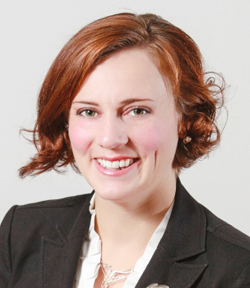
When it comes to bus passes, persons receiving disability assistance can receive a Transportation Support Allowance either as a bus pass or as $52 added to their monthly payment. While that might work on on balance for seniors (who in the Greater Victoria area would pay $45 for a BC Transit monthly bus pass), for adults the BC Transit one-month bus pass costs $85.
The ministry has eliminated the annual $45 BC Bus Pass administration fee and the annual renewal process for people receiving disability assistance who have the Persons with Disabilities designation. The BC Bus Pass allows for for travel anywhere within the TransLink and BC Transit service areas. It cannot be used on HandyDart (BC Transit fee for that is $22.50 for 10 tickets).
The BC NDP’s social development spokesperson Michelle Mungall says: “Christy Clark has only given back the money that she took away last year with the bus pass clawback, minus a toonie. Last year she decided to charge people with disabilities $52 per month for their bus pass, and this raise doesn’t even cover it. They are still living in poverty, they are still struggling to feed themselves and they are still finding it difficult to be included in their community.”
“We need a poverty reduction plan in BC, just like every other province, because plans work,” says Mungall.” I will once again introduce legislation for a plan next week, and with any hope Christy Clark will put the corporate interests and partisan politics aside and support my bill. If not, people can have their say at the polls on May 9.”
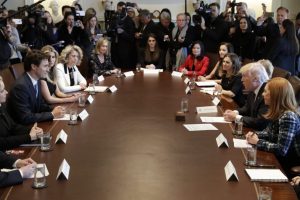 Monday, February 13, 2017 ~ Canada/US. A roundtable discussion on ‘women in the workforce’ this morning at the White House started at the top with women CEOs of major corporations in the room with President Donald Trump and Prime Minister Justin Trudeau.
Monday, February 13, 2017 ~ Canada/US. A roundtable discussion on ‘women in the workforce’ this morning at the White House started at the top with women CEOs of major corporations in the room with President Donald Trump and Prime Minister Justin Trudeau.
Trudeau and Trump were seated across the table from one another, with the live-feed TV camera featuring Trump. Ivanka Trump was seated to the left of Prime Minister Trudeau. Canadian Foreign Minister Chrystia Freeland was seated diagonally across the table from Trudeau.
Trump called it ‘unique’ that women handle both career and family, and that women (indeed all businesses) need better access to capital. One of Trump’s recent Executive Orders is designed to deregulate the US financial industry to a degree that is not yet known.
Trudeau addressed the approximately 30 people in the room, saying that in addition to fostering the success of women in business as “the right thing to do, that women in business provide “powerful leverage” to their businesses and their communities. Toward the end of his remarks, he delivered about two sentences in French, the repeating those brief remarks in English.
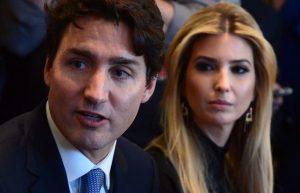 On a first-name basis around the table, Trump and Trudeau’s comments were followed by a brief comment by Ivanka Trump, then brief introductions by first Canadian women executives, then American. Included among those representing Canadian women in business were two CEOs based out of western Canada: Dawn Farrell. President and CEO of TransAlta Corporation; Tina Lee, CEO at T&T Supermarket Inc.
On a first-name basis around the table, Trump and Trudeau’s comments were followed by a brief comment by Ivanka Trump, then brief introductions by first Canadian women executives, then American. Included among those representing Canadian women in business were two CEOs based out of western Canada: Dawn Farrell. President and CEO of TransAlta Corporation; Tina Lee, CEO at T&T Supermarket Inc.
Also at the meeting today are Trudeau’s chief of staff Katie Telford, Canadian Foreign Minister Chrystia Freeland, and Dina Powell, assistant to the president and senior counsellor for economic initiatives. Powell, Telford and Freeland were involved in setting up the council and recruiting the CEOS.
The council includes many of the meeting attendees, as well as Mary Barra, General Motors CEO, GE Vice Chair Beth Comstock and Catalyst CEO Deborah Gillis.
It is not yet clear whether the roundtable will delve into the details of maternity leave and childcare, how to recruit and retain women, and how to better support women entrepreneurs.
Ivanka Trump does not have an official White House role. Her husband Jared Kushner is a senior advisor to the president. Ivanka Trump’s clothing and lifestyle brand has suffered in the retail market in recent weeks.
[Photo of Ivanka Trump by Evan Vucci, Associated Press; available online]
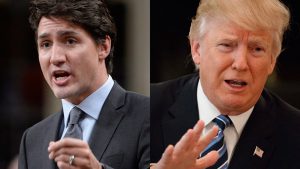 Sunday, February 12 ~ NATIONAL. Wow, if you think you have a busy day scheduled for Monday, February 13, look at this schedule set up for Prime Minister Justin Trudeau for a one-day return trip to Washington, DC! Most of Trudeau’s day will be open to media coverage. Trudeau took the February 10-11 weekend off for personal time ahead of this busy Monday representing Canada in the USA:
Sunday, February 12 ~ NATIONAL. Wow, if you think you have a busy day scheduled for Monday, February 13, look at this schedule set up for Prime Minister Justin Trudeau for a one-day return trip to Washington, DC! Most of Trudeau’s day will be open to media coverage. Trudeau took the February 10-11 weekend off for personal time ahead of this busy Monday representing Canada in the USA:
- The Prime Minister will depart at 7 am (EST) for Washington, DC, giving a photo op to media at the Macdonald-Cartier International Airport in Ottawa. He will arrive in Maryland at Joint Base Andrews at 9 am.
- By 10:50 am Trudeau will arrive at the White House and be greeted by the President of the United States of America, Donald J. Trump in the West Wing of the White House. At 11:10 am they will hold a tête-a-tête meeting in the Oval Office. That won’t last long, as they will at 11:25 am hold an expanded bilateral meeting with the President of the United States, still in the oval office.
- Starting at 12:15 pm Trudeau and Trump will participate in a roundtable discussion with women executives, followed by luncheon — all of that in the Cabinet Room, West Wing.
- At 2pm Trudeau and Trump will hold a joint media availability at the White House. Then at 3pm Trudeau will meet with the Speaker of the United States House of Representatives, Paul Ryan at the United States Capitol. At 3:40 pm Trudeau will meet with the Senate Majority Leader, Mitch McConnell.
- Then back to Ottawa at 6pm.
Our editorial on how the meeting might go best for Canada is on page 2 in the February 10, 2017 issue of West Shore Voice News.

Sept 24, 2016. WEST SHORE VOICE NEWS photo.
Saturday, February 11 ~ OTTAWA. A visit to further a bond with northern countries is planned for February 19 to 23.
Governor General of Canada David Johnston and Mrs Sharon Johnston will conduct a state visit to Sweden. King Carl XVI Gustaf and Queen Silvia will host the Johnstons during the visit that will focus on building innovative, sustainable societies that benefit everyone.
“Canada and Sweden have a great deal in common as Northern countries that are firmly committed to human rights, the environment, free trade, and the well-being and prosperity of their citizens,” says Prime Minister Justin Trudeau. “This visit by the Governor General of Canada will help further strengthen our social and commercial ties, and reaffirm our warm friendship.”
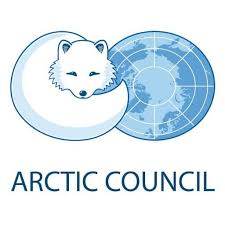 Canada and Sweden collaborate on Northern issues within the Arctic Council, including sustainable development and environmental protection. There is significant trade and investment flow between the two countries, with close cooperation in innovation, science and technology.
Canada and Sweden collaborate on Northern issues within the Arctic Council, including sustainable development and environmental protection. There is significant trade and investment flow between the two countries, with close cooperation in innovation, science and technology.
“Sweden is one of Canada’s top priority countries for investment as it is home to a number of large, technologically sophisticated, multi-national companies and dynamic and innovative small-to-medium sized enterprises,” it was stated in a Prime Minister’s office release on February 10.
 Friday, February 3 ~ VICTORIA. BC Ferries has added sailings during peak travel times on the BC Family Day weekend. Heavy traffic is expected on some sailings between Metro Vancouver and Vancouver Island.
Friday, February 3 ~ VICTORIA. BC Ferries has added sailings during peak travel times on the BC Family Day weekend. Heavy traffic is expected on some sailings between Metro Vancouver and Vancouver Island.
The added sailings are on the Tsawwassen – Swartz Bay and the Departure Bay – Horseshoe Bay routes starting February 10. The extra sailings are:
Tsawwassen – Swartz Bay route:
- Fri Feb 10 – 10:00 am, 2:00 pm and 6:00 pm depart Tsawwassen
- Sat Feb 11 – 8:00 am and 12:00 pm depart Tsawwassen
- Sun Feb 12 – 2:00 pm and 6:00 pm depart Tsawwassen
- Mon Feb 13 – 10:00 am, 2:00 pm, 6:00 pm depart Tsawwassen
- Fri Feb 10 – 12:00 pm and 4:00 pm depart Swartz Bay
- Sat Feb 11 – 10:00 am and 2:00 pm depart Swartz Bay
- Sun Feb 12 – 4:00 pm depart from Swartz Bay
- Mon Feb 13 – 12:00 pm and 4:00 pm depart Swartz Bay
Departure Bay – Horseshoe Bay route:
- Mon Feb 13– 7:00 p.m. depart Departure Bay
- Mon Feb 13 – 9:00 p.m. depart Horseshoe Bay
As usual, travellers are advised to check the website for current conditions.
BC Ferries reminds customers travelling in vehicles with reservations to inform the ticket agent that they have a reservation when they arrive at the ticket booth. This self-identification helps expedite the check-in process.
 Wednesday, February 1 ~ OTTAWA. ELECTORAL REFORM. The Liberal government has dropped its initiative to change Canada’s electoral voting system. In a mandate letter for newly appointed Democratic Institutions Minister Karina Gould, Prime Minister Justin Trudeau makes it clear that electoral reform is no longer on the agenda.
Wednesday, February 1 ~ OTTAWA. ELECTORAL REFORM. The Liberal government has dropped its initiative to change Canada’s electoral voting system. In a mandate letter for newly appointed Democratic Institutions Minister Karina Gould, Prime Minister Justin Trudeau makes it clear that electoral reform is no longer on the agenda.
Electoral reform had been among Liberal campaign promises during the 2015 federal election campaign. Trudeau repeatedly promised — both as a campaigning Liberal leader and as prime minister in a speech from the throne — to eliminate (and replace) the current first-past-the-post voting system in time for the 2019 federal election.
The Liberals claim there is no consensus, after holding a variety of consultations across the country both online and in forums. Canadians made their views known through the House of Commons special committee on electoral reform, town halls held by MPs from all parties, the travels of former minister Maryam Monsef and a much-maligned online survey called MyDemocracy.ca.
The mandate letter shows that Trudeau does not believe those consultations have produced a clear path forward to reform or more specifically, a preferred replacement.
The NDP have called for a system of proportional representation for a long time. Nathan Cullen gave a long news conference today from Ottawa expressing his exasperation with Trudeau over the decision to abandon electoral reform.
The Conservatives in official opposition had pushed for a referendum on electoral reform. But they are likely pleased with today’s reestablishment of the status quo given that first-past-the-post generally favours either Conservatives or Liberals, in turn. The Conservatives were the least favourable to electoral reform during the 2015 campaign, which shows their political posturing today of being offended by Trudeau’s decision to be somewhat thin.
CYBER SAFETY. Some significant new items in the mandate letter today include Gould, Defence Minister Harjit Sajjan and Public Safety Minister Ralph Goodale be charged with finding ways to defend the Canadian political system against cyber threats and hackers.
In the heat of the moment in the House of Commons today, NDP Leader Tom Mulcair somewhat mocked the importance of working to stop cyber-threats (compared to the importance of electoral reform), a comment which could come back to haunt the NDP.
Trudeau wrote: “This should include asking the Communications Security Establishment (CSE) to analyze risks to Canada’s political and electoral activities from hackers, and to release this assessment publicly.” Trudeau also wants the three ministers to ask the CSE to “offer advice” to Elections Canada and political parties — including opposition parties — on “best practices” regarding cyber security.
FUNDRAISING TRANSPARENCY. Members of all federal parties undertook private political meetings in people’s homes during the 2015 federal election campaign, at which fundraising was not an unlikely occurrence. But in recent months the federal Liberals have come under fire for high-profile private fundraisers with big-ticket entry fees (some as much as $1,500).
So it’s safe territory — something that levels the playing field among all parties — for Trudeau to be asking Gould to take the lead on developing legislation to bring stricter rules — and greater transparency — to political fundraising, a response to months of negative headlines about so-called cash-for-access Liberal fundraisers. The promised legislation would require cabinet ministers, party leaders and leadership candidates to publicly advertise their fundraisers in advance, and release a report after the fact with details of the event. The proposed new law, if passed, would also require events to take place in publicly available spaces, where anyone from the public — including the media — would be allowed to attend. “Other measures may follow after discussion with the other political parties,” Trudeau writes.
FAIR ELECTIONS. The mandate letter repeat an earlier commitment to repeal some elements of the previous Conservative government’s Fair Elections Act (which tended to make voting more difficult for some in the electorate) and exploring the idea of an independent commissioner to organize leaders’ debates during federal elections. When the Conservatives brought in their Fair Elections Act ahead of the 2015 election it blocked the ability of Elections Canada to impartially motivate citizen interest in the voting process. Gould has also been charged with reviewing campaign spending limits and working with Treasury Board President Scott Brison and Justice Minister Jody Wilson-Raybould to increase the openness of government, including reviewing the Access to Information Act.
 Wednesday, February 1 ~ BC. An additional $5 million to support the BC SPCA’s eight-year Facilities Development and Service Plan has been issued by the BC Government, it was announced yesterday. The funds are for use to replace or renovate aging animal shelters.
Wednesday, February 1 ~ BC. An additional $5 million to support the BC SPCA’s eight-year Facilities Development and Service Plan has been issued by the BC Government, it was announced yesterday. The funds are for use to replace or renovate aging animal shelters.
The funding announcement will allow the BC SPCA to embark on the initial stages of Phase 2 of its facilities plan, which includes a new Vancouver campus. Plans for the new Vancouver site are in the early-planning stages, but n addition to being BC SPCA’s provincial office will include a Community Animal Centre, full-service veterinary hospital, education centre. “This will increase their capacity to serve as the Lower Mainland’s primary hub for surrendered animals, and support rescued animals that are looking for their forever homes,” it was stated in a release from the BC Ministry of Agriculture.
“The BC government recognizes and values the important work of the BC SPCA and its contributions to the welfare of animals,” the release continued, saying the funding builds on the $5 million announced in Balanced Budget 2015 to support the first phase of their facilities plan, and supports the Province’s commitment to working with the BC SPCA to address animal-welfare issues throughout the province.
The government says that Phase 1 funding supported a large animal-seizure facility, which opened in Kelowna in March 2015, and in June 2016, a new state-of-the-art SPCA facility opened its doors in Nanaimo. Recently, plans were unveiled for a new community animal centre in Kamloops to help address the overwhelming pet population in the area.
The BC SPCA’s mission is to protect and enhance the quality of life for domestic, farm and wild animals in BC. The not-for-profit organization has been serving animals in need for over 120 years, caring for neglected, abused and homeless animals and offering a wide range of outreach, education and advocacy programs to promote the welfare of animals.
The BC government is making record investments in modern, safe infrastructure projects throughout the province. In doing so, these construction projects are creating high-paying, family-supporting jobs. The government says these investments are possible because of the fiscal plan of the BC government.
“Animals everywhere deserve proper care and housing. With this additional $5 million from the provincial government, we will see more animals under the care of the BC SPCA receiving the treatment they need to be healthy and protected,” says Jane Thornthwaite, North Vancouver-Seymour MLA.
“We are extremely grateful to the Government of British Columbia for their ongoing support of homeless, abused and vulnerable animals,” says Craig Daniell, chief executive officer, BC SPCA. “This $5-million contribution provides a valuable launch as we move forward with community fundraising for second phase of our capital building plan, which will include a new community animal centre in Vancouver. The government has contributed a total of $10 million since 2015 towards our $53.8 million Facilities Development and Services Plan to replace or refurbish aging SPCA shelters, which has enabled us to carry out work in eight BC communities to date.”

